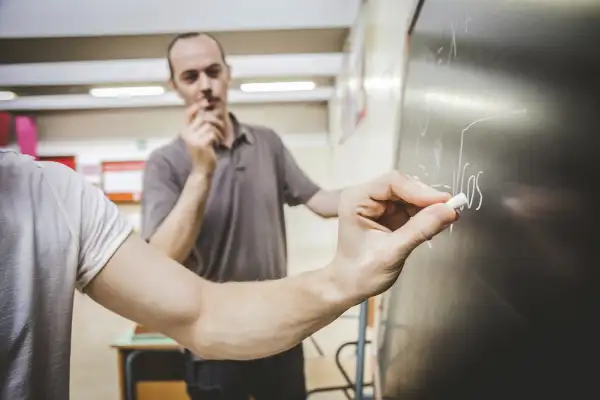This Is the Best Way to Teach Kids About Money

As educators and policymakers debate the best way to teach personal finance lessons in the classroom, they may want to focus on the teachers themselves—not the students. Turns out, high school students who are required to take a personal finance class led by an instructor with formal training end up with vastly improved money skills.
That's the finding of a new study from the Champlain College Center for Financial Literacy. Researchers found that high school students taught by trained teachers acquired money skills that not only exceeded those of their teenage peers, but also beat those of a typical Millennial and were nearly on par with a typical member of Gen X. In short, the teens matched or beat older generations who presumably have picked up more wisdom through life experience.
What makes these findings so intriguing is the focus on teacher instruction. Truth is, most teachers have little financial knowledge, much less training in teaching the subject. As a landmark study out of the University of Wisconsin in 2009 found, fewer than one in five K-12 teachers felt qualified to head a personal finance course. Only 37% had even taken such a class in college, let alone studied to be an instructor.
To find out what kind of impact such training could provide, the Champlain researchers divided 800 high school students in Vermont into two groups—one group received no personal finance instruction, while the other group took either a one-semester stand-alone course in personal finance or its equivalent embedded in a one-year class in math or life skills. The personal finance teachers had all taken a 45-hour graduate level course at Champlain College.
Following the training, every teacher said they had benefited from the course, while the number who felt qualified to teach personal finance more than doubled, according to the findings. Students that took the class improved their test score, on average, to a grade of 62% from 53%. Those who did not take the class regressed modestly.
The study did not look at personal finance courses led by a teacher without formal training in the subject. But low confidence readings among teachers without training strongly suggest their student scores would lag. Just 31% of teachers said they were completely confident they had the skills to teach the subject before formal training. After the training, that figure soared to 70%—and a whopping 94% agreed they had the knowledge they needed.
So with more confident and knowledgeable teachers, what exactly did the kids learn? Questions centered on decision making, income, careers, money management, credit, insurance, saving and investing. The biggest improvements by far were in understanding debit card and ATM fees, as well as planning where to spend their money. The kids also improved their understanding of billing for phone service and the costs of exceeding plan limits. These are the kinds of practical money skills that can lead to substantial savings over time and improve the financial future of a generation that is likely to have a shaky financial safety net in old age.
But it should be noted that despite the boost from trained teachers, overall financial literacy rates among the students remained relatively low. The kids still got just 62% of the answers correct and the share demonstrating high financial literacy—answering at least four of five basic questions correctly—was just 35%. That compares to 24% for Millennials, 38% for Gen X, and 48% for boomers. Clearly, all generations have room for improvement. Training teachers is a good place to start.
